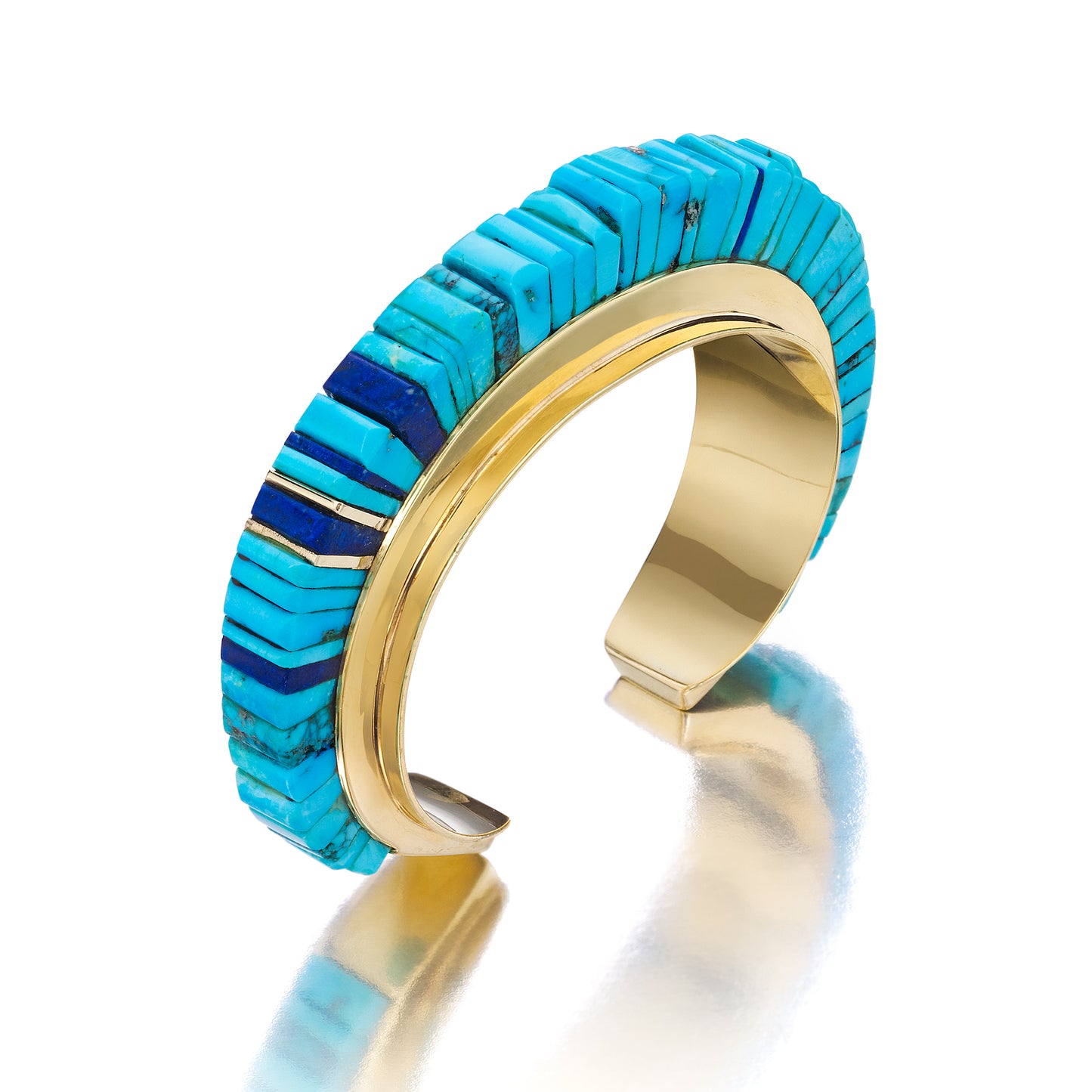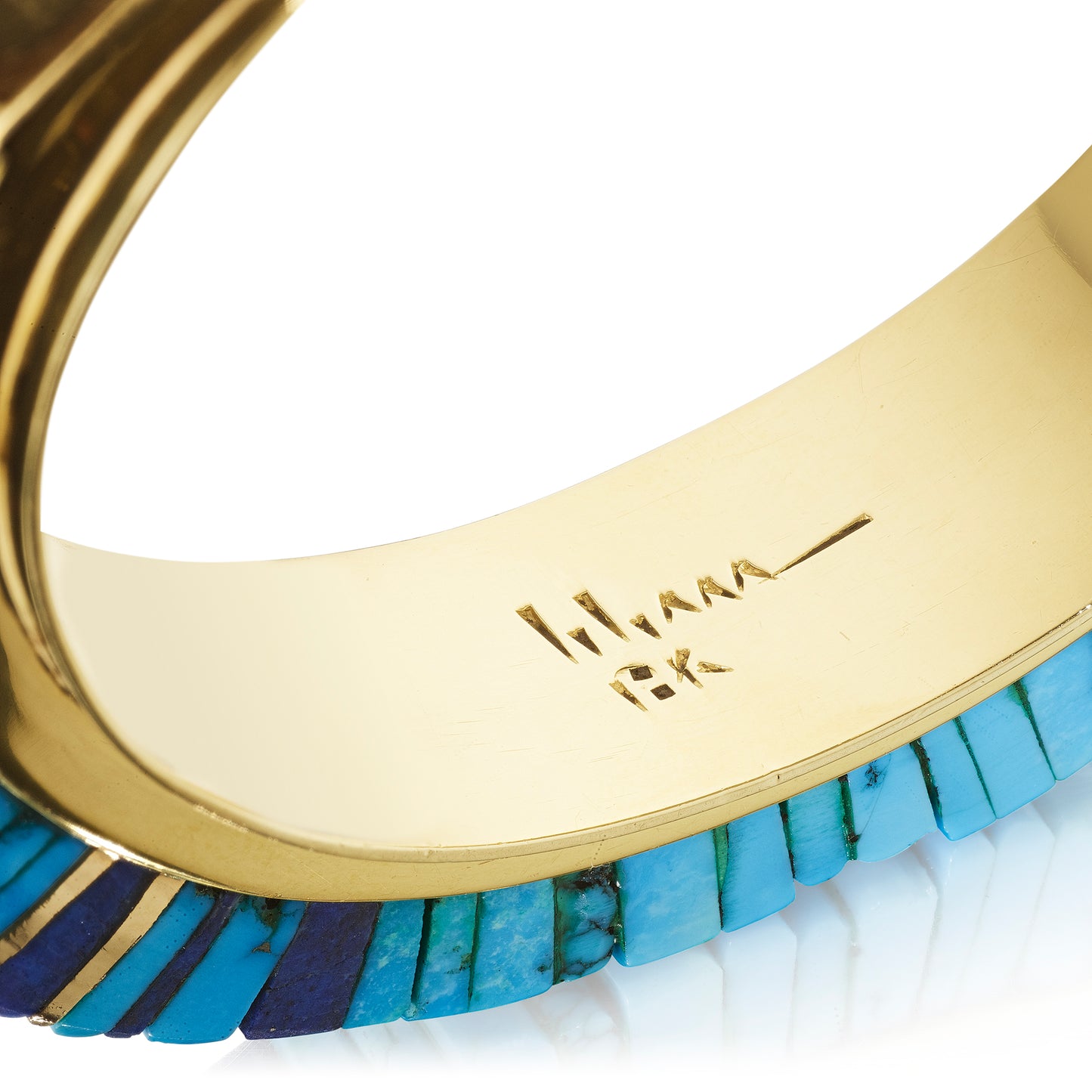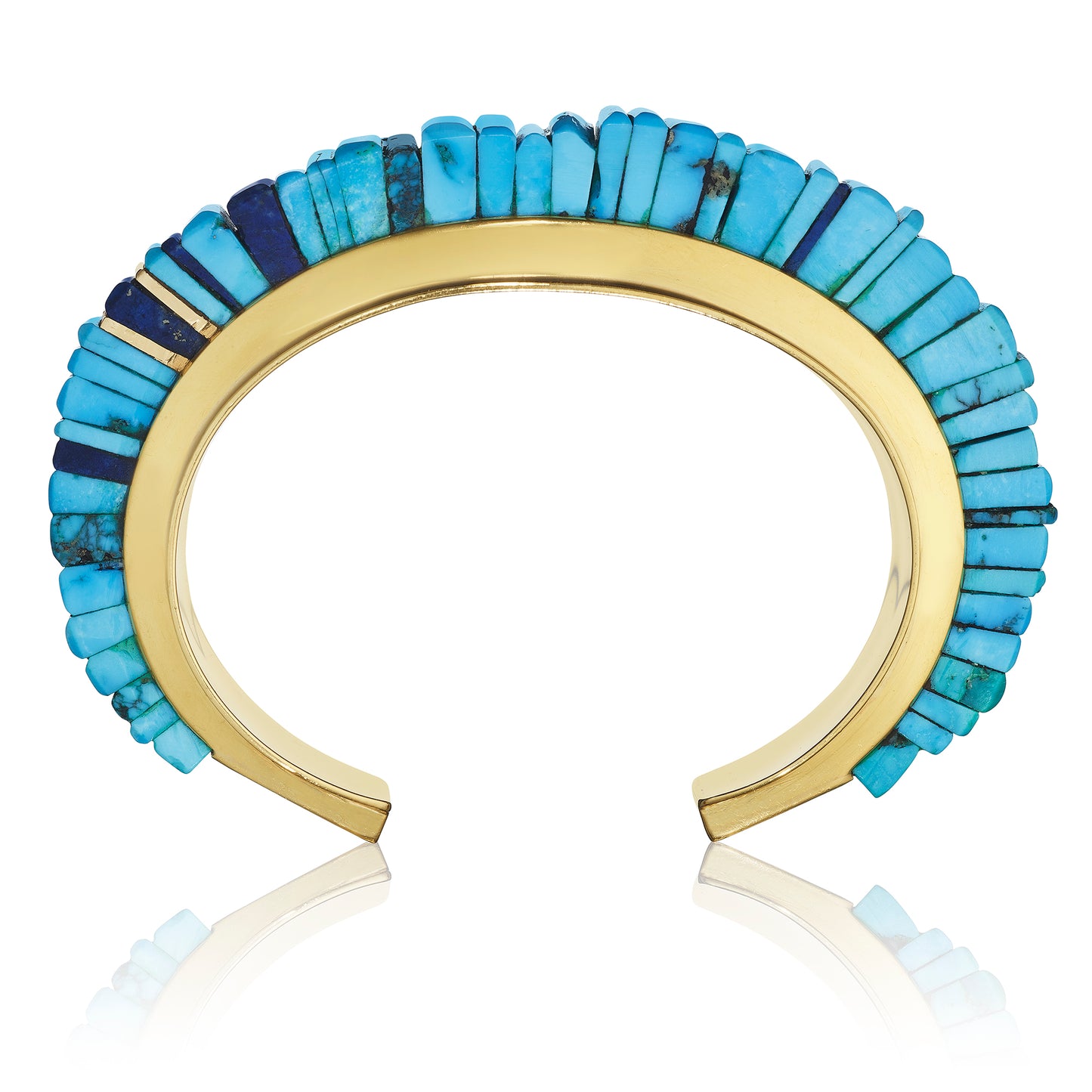TURQUOISE, LAPIS LAZULI, AND GOLD CUFF BRACELET BY CHARLES LOLOMA, HOTEVILLA, ARIZONA, CIRCA 1975
TURQUOISE, LAPIS LAZULI, AND GOLD CUFF BRACELET BY CHARLES LOLOMA, HOTEVILLA, ARIZONA, CIRCA 1975
A bracelet composed of stacked turquoise segments of varying widths set atop the cuff, mixed with 4 lapis lazuli segments and two yellow gold segments; mounted in 18-karat yellow gold
- Signed Loloma
- Measurements: 3 1/4 x 2 1/2 x 3/4 inches
Additional cataloguing
Literature
Struever, Martha Hopkins. Loloma. Santa Fe: The Wheelright Museum of the American Indian, 2005, p. 126.
Biography
Charles Loloma was born to the Badger Clan in 1921 on the Third Mesa of the Arizona Hopi Reservation. Involved in the arts from a young age, while in high school he helped a Hopi artist paint murals for the Museum of Modern Art (MoMA), New York. He studied pottery, and in 1954 opened a shop in Scottsdale. Loloma began to make jewelry and found his passion incorporating traditional materials and forms with new materials and modern interpretation. Produced until the mid 1980s, his work is included in important museum collections and has been the subject of a book and several exhibitions. Frank Lloyd Wright was a notable client.
Significance
In the 1960s and 1970s, Charles Loloma created beautiful bold jewelry incorporating stacked stones and mosaic with unusual material and color combinations. While he drew on his Hopi ancestry for the origins of his art and material choices, using turquoise and silver, he also incorporated unusual materials, such as sugilite, lapis, ivory, gold, wood, and fossilized wood in his designs. Stacking the stones and fitting them together in sculptural ways, Loloma created beautiful, iconic jewels that are highly collectible.
While Loloma’s Hopi ancestry was important to him, and an undeniable influence on his work, he had also traveled the world, first to New York, San Francisco, and even the White House as a muralist assistant to Hopi painter Fred Kabotie and to René D’Harnoncourt (later director of MoMA); he then traveled in the army during World War II. When he attended Alfred University he frequented exhibitions in New York City, including Modern Handmade Jewelry at the MoMA in 1945, where he saw work by Alexander Calder and others. Shortly after this, he started casting his own jewelry. These early pieces were mostly studies in texture and traditional shapes. Already a well-known artist by the 1960s (President Lyndon B. Johnson had used his jewelry for several state gifts, including to Queen Juliana of the Netherlands), Loloma’s development of his identifiable style came when he observed in a book on Egyptian jewelry how the stone bead materials were stacked side by side, to create a kaleidoscope of colors. Lapis lazuli suited his configurations, in particular, and he started using it frequently.
This bracelet, designed as a stacked series of turquoise, lapis lazuli, and gold rectangles, curves around the wrist. Loloma intended the design to evoke traditional bead strands that would have been wrapped around an arm, but with modern treatment, encased in polished gold and with lapis lazuli and gold pieces slipped in as a subtle and beautiful design move. While the turquoise is a nod to traditional native culture, the treatment shows an understanding of modern jewelry and the eye of an artist. Loloma is the most important Native American jeweler and his pieces are increasingly sought after by museums and collectors. This striking example would be an important addition to any collection.









